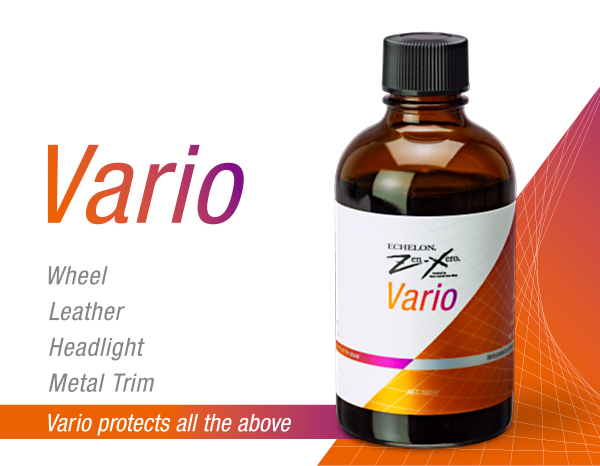- FE News»
- PPS News»
- Jun. 23, 2025
- Notice of Specification Change for ECHELON Zen-Xero Series Maintenance Bags
- Oct. 31, 2024
- [News Release R-1020] Release of "ECHELON Zen-Xero DYNAMIX”
- May. 15, 2024
- [News Release R-1019] Release of "ECHELON Ver.3.0”
- Oct. 02, 2023
- [News Release R-1018]Compound that achieves a genuine finish Full Renewal of “KATANA” Series
- Jun. 27, 2023
- [News Release] A final finishing compound that achieves a beautiful wet gloss. "KATANA DARK-SHOT" is Released.
Problems that cannot be solved by polishing
To summarize the information provided so far, deterioration of headlights is caused by a variety of factors, and the methods and tools for dealing with it will vary depending on the degree of deterioration. However, due to the nature of polycarbonate, in some cases it is not possible to restore headlights to their original shine.
1. Water or contaminants getting inside the headlight
This is when water or contaminants get inside the headlight due to damage to the lens from an accident or inadequate waterproofing. The water repeatedly evaporates and condenses inside the headlight, binding with the dust inside. This leads to yellowing inside of the lens or the formation of a layer of contaminants. When this happens, it is not possible to clean the interior without disassembling the headlight.
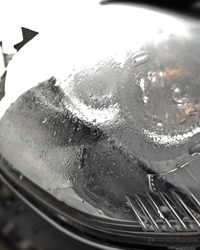
2. Cracks caused by deterioration of polycarbonate
As the hard coat deteriorates and the polycarbonate itself begins to deteriorate, cracks emerge. Polishing is possible, but cracks are difficult to remove. Furthermore, in this state, if excessive heat is applied by polishing with a polisher or organic solvents are used for degreasing, it may cause further cracking.
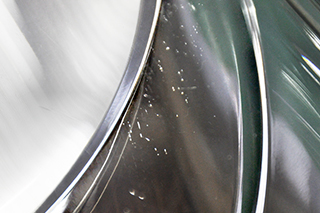
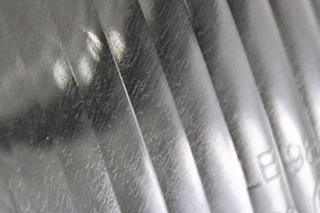
Effects of ultraviolet rays from the light bulb
The main lights used in modern automobiles are halogen bulbs and HID bulbs (high intensity discharge headlights). It is a little known fact that while their wavelengths differ, both types of bulb emit ultraviolet rays. However, deterioration caused by ultraviolet rays almost never actually begins from inside the lens. This is because the bulbs use quartz glass that has been specially treated to block ultraviolet rays. That is why HID bulbs from other companies are often advertised as "made with quartz glass from Company X." HID bulbs emit a particularly large amount of UV radiation, and certain low quality products from other companies use quartz glass that does not block UV rays. For that reason, caution is necessary. It is difficult to clean a headlight that has yellowed from the inside.
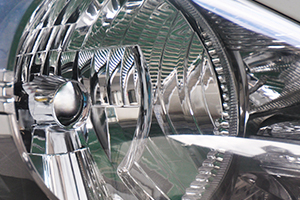
Headlights: Contents
Related Products










































